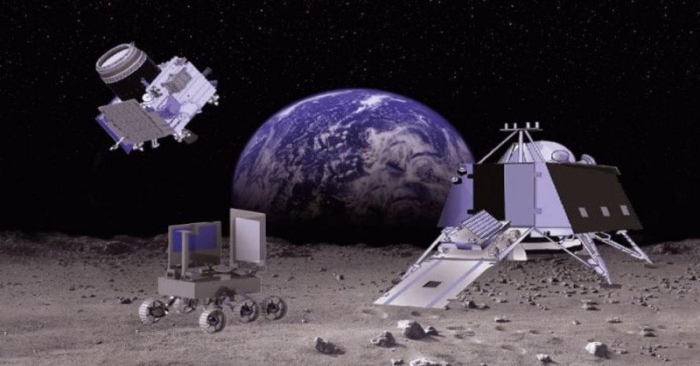Three black holes from three galaxies have merged to form a triple active galactic nucleus, according to Indian researchers

New Delhi, India: According to a statement from India’s Ministry of Science and Technology, researchers discovered three supermassive black holes from three galaxies merging to form a triple active galactic nucleus in our nearby universe. The research was published in the journal Astronomy and Astrophysics as a letter.
The active galactic nucleus is a dense region at the heart of a newly discovered galaxy with a much higher luminosity than normal. “This rare occurrence in our nearby Universe indicates that small merging groups are ideal laboratories for detecting multiple accreting supermassive black holes,” according to the statement.
Because they emit no light, supermassive black holes are difficult to detect. They can, however, make their presence known by interacting with their environment. When dust and gas from the environment fall onto a supermassive black hole, some of the mass is swallowed by the black hole, but some is converted to energy and emitted as electromagnetic radiation, giving the black hole its luminous appearance.
They are known as active galactic nuclei (AGN), and they emit massive amounts of ionised particles and energy into the galaxy and its surroundings. According to the report, both of these eventually contribute to the growth of the medium surrounding the galaxy and, ultimately, the evolution of the galaxy itself.
While studying a known interacting galaxy pair, NGC7733 and NGC7734, a team of researchers from the Indian Institute of Astrophysics, including Jyoti Yadav, Mousumi Das, and Sudhanshu Barway, and Francoise Combes of College de France, Chaire Galaxies et Cosmologie, Paris, discovered unusual emissions from the centre of NGC7734 and a large, bright clump along the northern arm of NGC7733.
This study, which was published as a letter in the journal Astronomy and Astrophysics, used data from the Ultra-Violet Imaging Telescope (UVIT) onboard India’s first space observatory ASTROSAT, the European integral field optical telescope MUSE mounted on Chile’s Very Large Telescope (VLT), and infrared images from the optical telescope (IRSF) in South Africa.
The presence of the third galaxy was also supported by the UV and H-alpha images, which revealed star formation as well as tidal tails that could have formed from the merger of NGC7733N with the larger galaxy. Each of the galaxies contains an active supermassive black hole in its nucleus, resulting in a very unusual triple AGN system.
Galaxy interactions, which occur when galaxies move close to each other and exert tremendous gravitational forces on each other, are a major factor influencing galaxy evolution, according to the researchers. The respective supermassive black holes can get close to each other during such galaxy interactions. The dual black holes begin to consume gas from their surroundings and evolve into dual AGN.
According to the IIA team, if two galaxies collide, their black holes will move closer together by transferring kinetic energy to the surrounding gas.
The distance between the blackholes shrinks over time until it is less than a parsec (3.26 light-years). The two black holes are then unable to lose any more kinetic energy as they approach and merge. This is referred to as the final parsec problem. This problem can be solved by the presence of a third black hole. The energy from the dual merging blackholes can be transferred to the third blackhole and they can merge.
Many AGN pairs have been discovered in the past, but triple AGN are extremely rare, with only a handful previously discovered using X-ray observations.The IIA team anticipates that such triple AGN systems will be more common in small merging groups of galaxies. Although this study only looked at one system, the findings suggest that small merging groups are ideal laboratories for detecting multiple supermassive black holes, according to the report.






